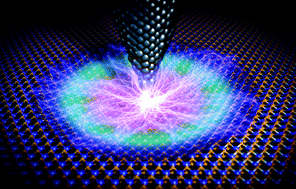Enhanced piezoelectric effect at the edges of stepped molybdenum disulfide nanosheets†
Abstract
The development of piezoelectric layered materials may be one of the key elements enabling expansion of nanotechnology, as they offer a solution for the construction of efficient transducers for a wide range of applications, including self-powered devices. Here, we investigate the piezoelectric effect in multilayer (ML) stepped MoS2 flakes obtained by liquid-phase exfoliation, which is especially interesting because it may allow the scalable fabrication of electronic devices using large area deposition techniques (e.g. solution casting, spray coating, inkjet printing). By using a conductive atomic force microscope we map the piezoelectricity of the MoS2 flakes at the nanoscale. Our experiments demonstrate the presence of electrical current densities above 100 A cm−2 when the flakes are strained in the absence of bias, and the current increases proportional to the bias. Simultaneously collected topographic and current maps demonstrate that the edges of stepped ML MoS2 flakes promote the piezoelectric effect, where the largest currents are observed. Density functional theory calculations are consistent with the ring-like piezoelectric potential generated when the flakes are strained, as well as the enhanced piezoelectric effect at edges. Our results pave the way to the design of piezoelectric devices using layered materials.



 Please wait while we load your content...
Please wait while we load your content...